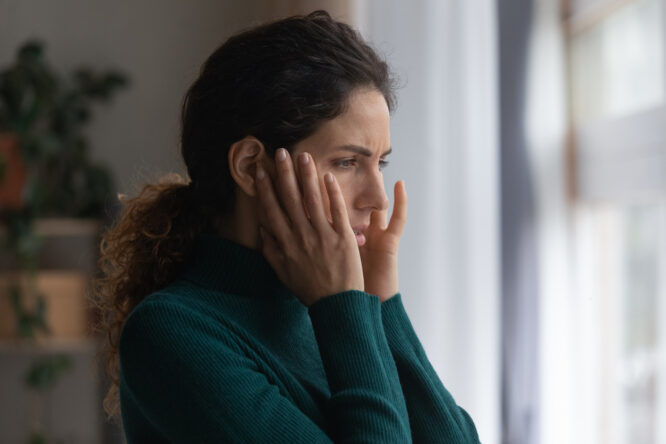Loneliness doesn’t always result in isolation or sadness, especially in older women who’ve been taught to hold it together, stay strong, or simply get on with things.

Instead, it shows itself in subtler ways, through small patterns, unspoken routines, and little changes that most people wouldn’t think twice about. These habits don’t make a woman weak. They’re often coping strategies that help fill the emotional gaps left by lost connection, family changes, or simply the passing of time. Here are some of the lesser-known ways loneliness can show itself in women in particular.
1. Talking to pets like they’re people
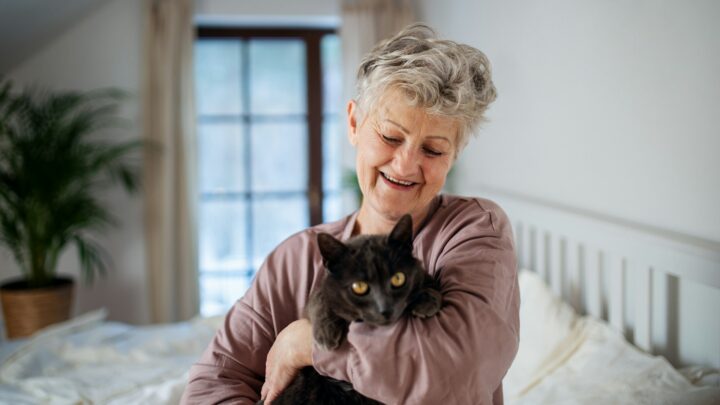
It’s totally normal to chat with pets, but when those conversations start to fill the silence left by human interaction, it can be a quiet sign of loneliness. Pets offer unconditional presence—and for someone who feels unseen, they become safe stand-ins for companionship.
This habit isn’t strange or unhealthy on its own, but it often hints that deeper emotional needs aren’t being met elsewhere. It can signal a desire for conversation, connection, and comfort that isn’t being met by the people around them.
2. Leaving the TV or radio on all day

Having background noise running from morning to night can help dull the weight of silence. Many older women keep the TV or radio on even when they’re not watching or listening closely—it’s more about having a sense of company in the room. This can feel comforting, but over time it may become a substitute for actual interaction. It reflects how heavily silence can start to feel when no one is around to break it with laughter, conversation, or presence.
3. Overcommitting to volunteering or errands

Staying busy is often seen as a good thing, but for some older women, constantly volunteering or running errands is less about purpose and more about distraction. If every spare moment is filled, it might be a way to avoid facing feelings of loneliness head-on.
It’s easier to keep moving than to sit still with emptiness. Overcommitment often becomes a way to feel useful or wanted, even when it’s draining, and can be a stand-in for deeper, more personal relationships that feel missing.
4. Avoiding going home too early

Some women take the long route home, make unnecessary stops, or linger in shops longer than needed—not because they’re bored, but because the idea of returning to an empty house feels heavy. Dragging out the day becomes a quiet ritual, not always consciously, to avoid loneliness setting in too soon. It’s a sign that home doesn’t feel quite as warm or connected as it once did.
5. Re-reading old letters or looking at photos often
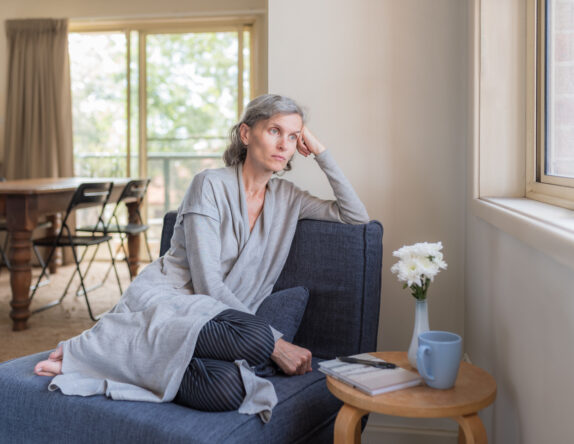
Memory becomes a lifeline when real-time connection is limited. Going through photo albums, saved voicemails, or old birthday cards is a tender way of keeping the past close, but it can also be a sign of emotional distance in the present. These moments might bring comfort, but they can also stir up a sense of being forgotten or left behind, especially if contact with family or friends has faded with time.
6. Making small talk with shopkeepers just to have a chat

Short conversations at the till or during appointments can become the highlight of the day for someone who doesn’t have many social interactions. These moments offer a chance to be seen, heard, and acknowledged. It’s not about needing deep friendships with strangers—it’s about how much even brief, everyday interactions can mean when more personal connections are missing from someone’s life.
7. Sleeping in or going to bed unusually early

For some, staying in bed becomes a way to pass time that otherwise feels empty. When days lack companionship or stimulation, sleep becomes a retreat—a way to avoid the heaviness of long, quiet hours. It can be a subtle form of emotional shutdown, not always noticeable at first. However, as time goes on, it can reinforce feelings of disconnection and make it harder to break the cycle.
8. Shopping for one but cooking for two

Continuing to prepare meals as if someone else is coming over—when they aren’t—can be a holdover from habit, but it can also be a way of holding onto a sense of shared life. Whether it’s cooking more than needed or setting out extra plates, these acts often speak to a longing for company.
They’re gestures of memory and hope, built from years of looking after other people. But when they become regular patterns, they can also hint at an emotional space that hasn’t been filled since someone left or drifted away.
9. Avoiding personal topics with friends or family

Lonely older women often avoid talking about how they feel, especially with family. They might keep things surface-level to avoid seeming needy, burdensome, or “too emotional.” This can create a quiet emotional wall—conversations happen, but connection doesn’t. Over time, this self-protection can become another layer of loneliness, where even familiar relationships feel distant.
10. Becoming overly invested in fictional characters

Getting absorbed in soap operas, books, or long TV series is common, but when those characters start to feel more familiar than real people, it may reflect a gap in emotional connection. Fiction offers safe intimacy—characters don’t let you down, cancel plans, or forget your birthday. However, relying on stories for companionship can also mean there’s a deeper need going unmet offline.
11. Keeping the phone nearby but rarely receiving calls

Some older women keep their phone fully charged and within reach all day—not out of habit, but out of quiet hope. Every ping or ring feels like it might be someone reaching out. When calls don’t come, the silence can feel louder than ever. This behaviour reveals not just a desire for connection, but the sting of feeling forgotten or left out.
12. Dressing up even when there’s nowhere to go
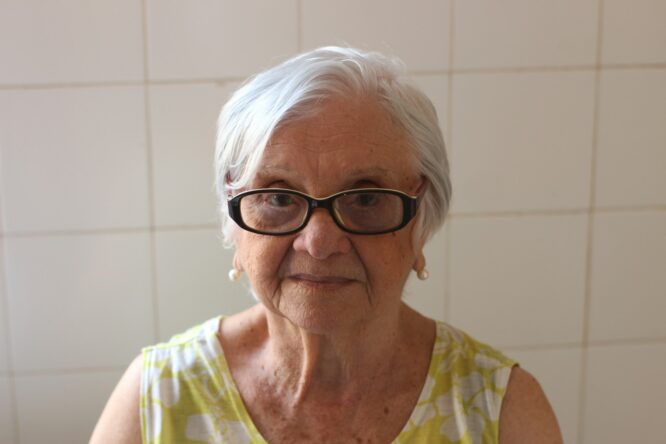
Wearing makeup, jewellery, or a full outfit just to stay at home might seem like self-care, and sometimes it is, but it can also reflect a longing to feel visible again. There’s a difference between enjoying fashion and dressing up because you miss being seen. It can be a way of saying, “I’m still here,” even if no one is around to notice. It’s a form of emotional presence—keeping dignity alive in the absence of attention.
13. Fixating on past grievances or regrets
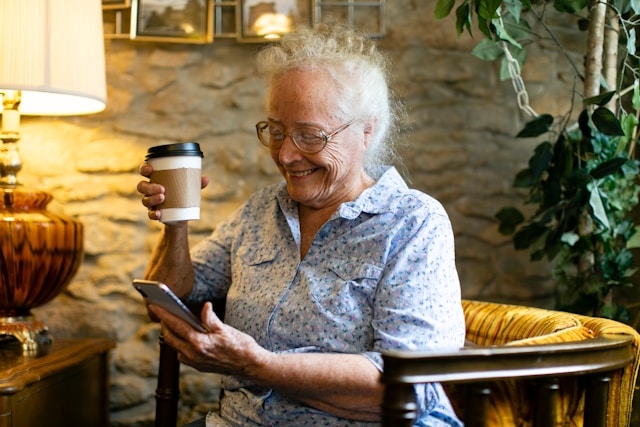
Loneliness can make the mind loop on things that were never resolved. For some older women, this shows up as dwelling on old betrayals, decisions, or moments that didn’t go the way they’d hoped. It’s not always about bitterness—it’s often about trying to understand what went wrong, or wishing for a different outcome. When there’s no one to talk it through with, those thoughts can quietly take over.
14. Downplaying how alone they feel

Many older women are masters of saying, “I’m fine” even when they’re not. They’ve learned not to complain, to stay upbeat, and to not ask for more than what they’re given. That silence can make their loneliness invisible to those around them. But behind the calm exterior, there’s often a quiet ache for deeper presence and meaningful connection.
15. Cleaning obsessively to fill the hours

Keeping the house spotless can be a source of pride—but it can also be a way to pass time when there’s nothing else happening. The repetitive nature of tidying up fills long stretches of quiet and gives a sense of control. For some, it becomes a coping strategy. It’s not about mess—it’s about the discomfort of stillness, and the need to stay busy, so the loneliness doesn’t sink in too deeply.
16. Watching the clock too closely

Checking the time often, counting down to meals or bedtime, or structuring the day around tiny rituals can be signs of someone trying to create shape in an otherwise quiet, empty-feeling life. It’s a way of making the day feel full when it isn’t. When you’re lonely, even time can feel heavy, and keeping track of it becomes both a comfort and a subtle cry for something more to look forward to.


